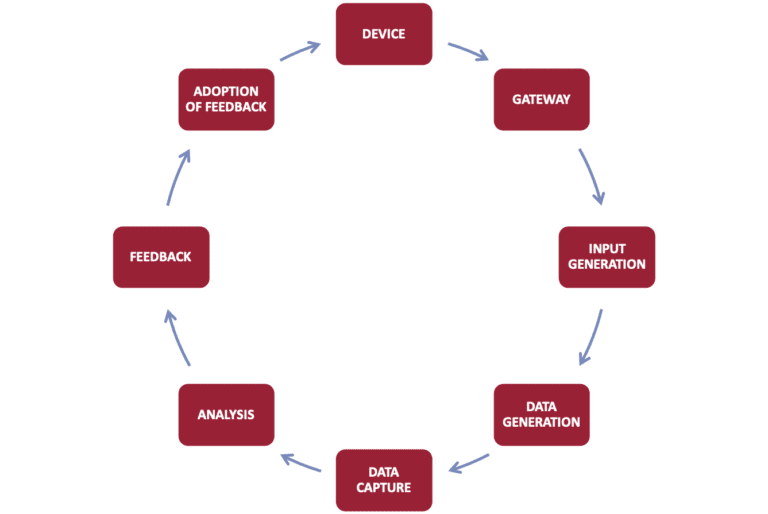
By Kristian Di Gaetano, VP of Data & Analytics
When you hear Internet of Things, or IoT, what is the first thing that comes to mind? Smart home thermostats? Bike helmet crash sensors? Heart monitors? You wouldn’t be wrong!
The Internet of Things can simply be defined as a network of physical objects (read: things) that are embedded with sensors and software to connect and share data with other technologies through the internet.
IoT serves a variety of purposes, the most important being to improve daily tasks and activities by providing insights and solutions to our challenges. But what does this functionality look like?
General Architecture of IoT:

Over the years, IoT funding and spending have continued to grow. $745 billion were spent in 2019 and spend is forecasted to reach $1 trillion by 2022. But which industries make up the most of this utilization? Currently automotive and industrial equipment industries show the majority of IoT usage. Internet of Things across these industries enable auto maintenance system and wind turbine predictive analytics, in-vehicle infotainment and telematics, warehouse fulfillment operations, as well as location tracking and fuel management. Look at Cisco, for example, they are a major company that uses IoT for networking, operations management, data management, and security. IoT across these areas has helped enable financial institutions, cities and communities, manufacturing, and transportation groups.
IDC predicts that by 2025 there will be close to 41.6 billion devices connected via IoT.
The Internet of Things makes up the future of our world and for years has been finding its way into day-to-day activities and products. Smart home tools use IoT to deliver security and efficiency insights; these sensors also hold the power to help us understand how noisy or polluted the world around us is, enabling change. The way we create and maintain our public spaces will continue to evolve with IoT-enabled autonomous cars and smart cities. As the number of people using smart devices increases, the requirement of automation grows in parallel for both commercial and consumer environments. What does this mean? The potential of IoT is limitless!
Increase in network agility as well as the advancement of AI will lead the way to automate, design, deploy, and secure diverse IoT use cases at hyperscale, allowing organizations to realize the financial and informational benefits at an accelerated pace!

